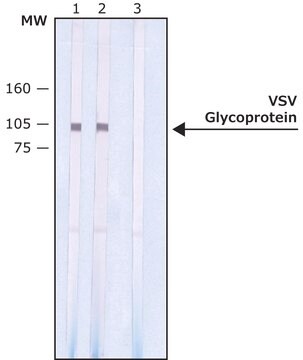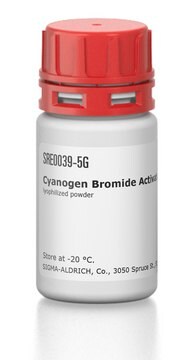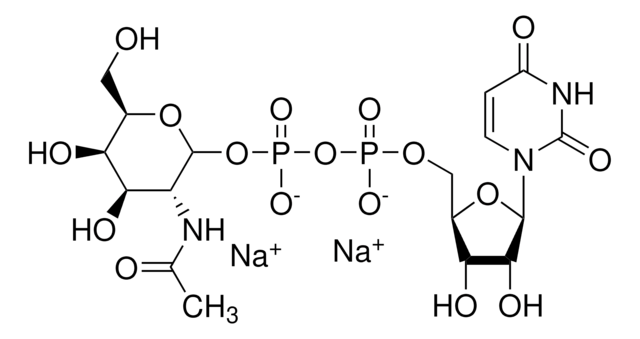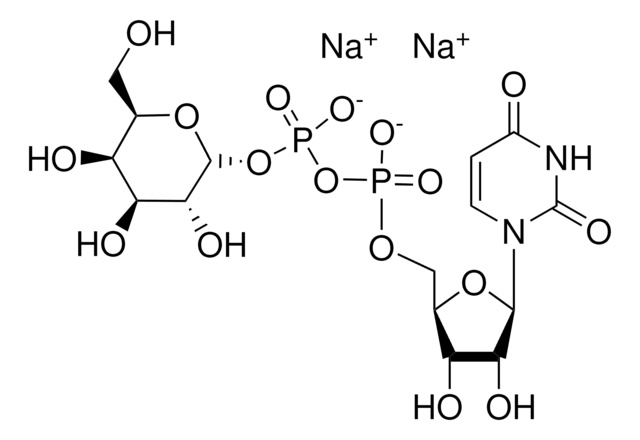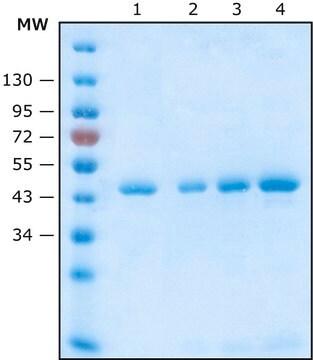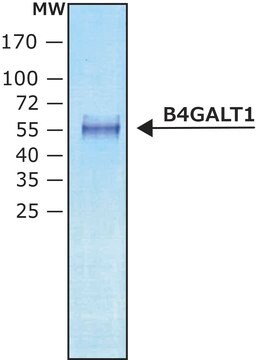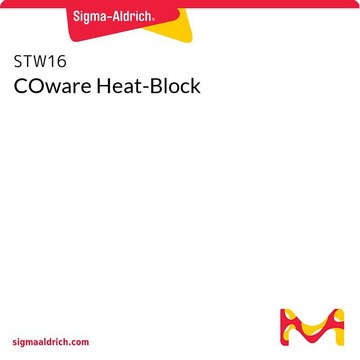V4888
Anti-VSV-G antibody produced in rabbit
affinity isolated antibody, buffered aqueous solution
Sinónimos:
Anti-Vesicular Stomatitis Virus glycoprotein
About This Item
IP
WB
indirect immunofluorescence: 1.0 μg/mL using VSV-G tagged fusion proteins in methanol/acetone fixed transiently transfected cells
western blot: 0.1-0.2 μg/mL using VSV-G tagged fusion proteins from transfected mammalian cell lysates
Productos recomendados
biological source
rabbit
Quality Level
conjugate
unconjugated
antibody form
affinity isolated antibody
antibody product type
primary antibodies
clone
polyclonal
form
buffered aqueous solution
species reactivity
mammals
concentration
~1.0 mg/mL
technique(s)
immunoprecipitation (IP): 0.5 μg using VSV-G tagged fusion proteins from transfected mammalian cell lysates (tagged fusion proteins from transfected mammalian cell lysates)
indirect immunofluorescence: 1.0 μg/mL using VSV-G tagged fusion proteins in methanol/acetone fixed transiently transfected cells
western blot: 0.1-0.2 μg/mL using VSV-G tagged fusion proteins from transfected mammalian cell lysates
shipped in
dry ice
storage temp.
−20°C
General description
Immunogen
Application
immunocytochemistry.
Chromatin immunoprecipitation (1 paper)
Western Blotting (1 paper)
Western blotting following immunoprecipitation (1 paper)
Biochem/physiol Actions
Physical form
¿No encuentra el producto adecuado?
Pruebe nuestro Herramienta de selección de productos.
Storage Class
10 - Combustible liquids
wgk_germany
WGK 3
flash_point_f
Not applicable
flash_point_c
Not applicable
Elija entre una de las versiones más recientes:
¿Ya tiene este producto?
Encuentre la documentación para los productos que ha comprado recientemente en la Biblioteca de documentos.
Nuestro equipo de científicos tiene experiencia en todas las áreas de investigación: Ciencias de la vida, Ciencia de los materiales, Síntesis química, Cromatografía, Analítica y muchas otras.
Póngase en contacto con el Servicio técnico